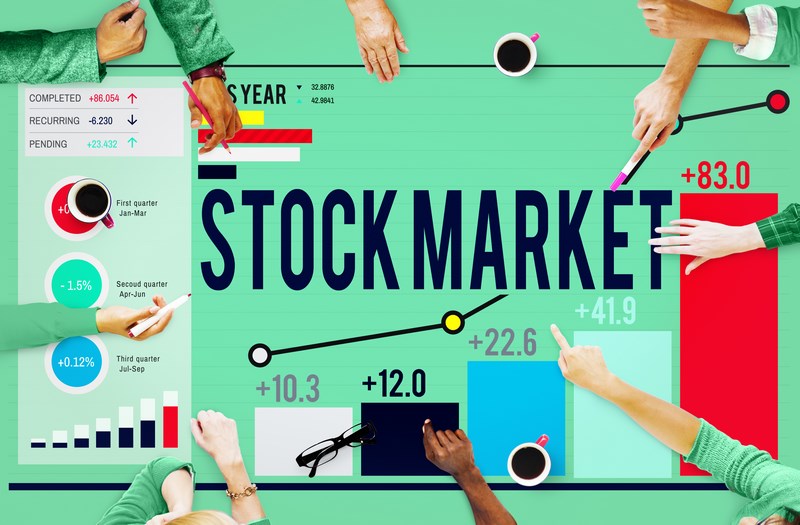 Financial markets are places where financial instruments are traded. In the economy, it occupies a third position next to the market of goods and services and the labor market. Financial instruments available on the market can be divided into:
Financial markets are places where financial instruments are traded. In the economy, it occupies a third position next to the market of goods and services and the labor market. Financial instruments available on the market can be divided into:
- Capital transfer instruments used to make capital available to those who request it by entities with a surplus of capital.
- Risk transfer instruments that allow the risk to be transferred to the other party in exchange for the appropriate commission. A good example is an option where we can hedge against exchange rate risk, interest rate, and so on. The risk premium is the option premium.
We can distinguish several segments of the financial market, although this is not a strict division, as the instruments of one market may be offered to some extent in others. However, we can distinguish:
Money market is a market where securities are traded with a maturity of up to 52 weeks. The purpose of the market is to provide liquidity to banks, financial institutions, large corporations and states.
Capital market is a place of trading debt securities issued for at least a year and shares, i.e. capital transfer instruments.
Foreign exchange market is the place where an exchange of one country’s currency for to the currency of another country.
Derivatives market can be used to transfer risk, as opposed to the capital market, whose main purpose is capital transfer. The value of derivatives depends on the underlying, shares, bonds, currency pairs, commodities, etc. The most popular derivative instruments are futures, forward, options, and recently also CFDs mainly for speculation.
Capital market and its primary function
Capital market, as previously mentioned, is the place where capital is transferred. Debt securities and equity securities are used to change ownership of capital. Thus, the main financial instruments traded in the capital market are:
- Bond
- Stock
Bond
 Bonds are the basic debt securities in the capital market. It is an instrument in which the issuer borrows capital from the buyer of the bond, called the bondholder. The bond issuer is obliged to repurchase it within the specified period and to pay the agreed interest.
Bonds are the basic debt securities in the capital market. It is an instrument in which the issuer borrows capital from the buyer of the bond, called the bondholder. The bond issuer is obliged to repurchase it within the specified period and to pay the agreed interest.
The issuer will be able to raise the capital needed to develop the business of the company cheaper than in banks or other lending institutions. In turn, governments issue bonds to finance the budget deficit.
Bond can be characterized by the following factors:
- nominal value, i.e. initial value of the debt from which interest is accrued and paid to the bond holder at maturity,
- expiry date is the period during which all debt has to be repaid. This is the time of “life” of the bond,
- interest (coupon) determines the amount of interest paid to the bondholder. The interest rate is expressed on a yearly basis,
- interest payment term, usually once a year, once a half year, quarter.
Bond can be divided by the interest rate criterion. We distinguish then:
- fixed-rate bond are characterized by fixed interest paid at certain dates,
- floating rate bond are characterized by floating interest rates that depend on the reference rate. The reference rate is usually the rate of interbank lending rates (WIBOR, LIBOR, EURIBOR) or the yield on treasury bills,
- zero-coupon bond do not pay interest. Instead, the price of such bond is lower than the nominal value, i.e. the bondholder buys a discounted bond. Upon expiration, it receives a nominal value.
The division into issuers is related to the level of credit risk, i.e. the possibility of failure to meet the conditions contained in the bonds. There are four types of bonds:
- treasury bond,
- municipal bond,
- corporate bond,
- bank bond.
Example of floating rate bond:
- bond with maturity of 3 years,
- nominal value of the bond 1000,
- floating interest rate LIBOR 6M,
- coupon paid in semi-annual,
- in the first half of the year LIBOR 6M is 2%, which gives half a year a 1% interest on nominal value,
- in the second half of the year, LIBOR 6M rose to 2.2%, meaning half-year interest will be 1.1% of nominal value,
- in the last six months the bondholder will receive interest with a nominal value of 1000.
Stock
 Stocks are a share-based securities issued by public limited companies. An investor who has acquired shares of a company is called a shareholder. An investor may acquire shares on the primary or secondary market.
Stocks are a share-based securities issued by public limited companies. An investor who has acquired shares of a company is called a shareholder. An investor may acquire shares on the primary or secondary market.
The company decides to sell its shares primarily to raise capital for the development of its business. The company does not have to bear the costs of borrowing bank loans. It only pays the share issue fees that it pays to advisory firms, brokerage houses for IPO preparation, etc. But these fees are even lower than the issue of bonds that require interest payments. A joint stock company can also easily raise additional capital through a new share issue. Another slightly indirect effect of the company’s listing on the stock exchange is the increase in prestige of the company. The main cost to the company is to get rid of some of the company’s shares.
In turn, an investor acquires a share in a company’s share of the company’s profits, i.e. a dividend. It may also expect an increase in the price of shares that will later be resold at a profit, or both.
A shareholder acquires the shares of the company becoming its co-owner. For example, the company issued 1 million shares, the investor bought 20 thousand, it means that its share is 2%. Apart from the ownership right, a shareholder buying ordinary shares acquires the following rights:
The right to vote at the general meeting of shareholders, where the shareholders, as co-owners, make important decisions concerning the company. They choose the Supervisory Board, decide on the size of the dividend, approve financial statements and decide on possible mergers and acquisitions. The basic bodies of the company are the General Assembly of Shareholders (the General Meeting of Shareholders), the Management Board and the Supervisory Board supervising the Management Board.
The right to dividend means that the shareholder is entitled to the profits of the company. A company whose revenue is higher than cost generates profit. Then the profit received is lesser for liabilities such as taxes, interest on loans, etc., which will result in a net profit. The Company divides net profit into retained earnings and dividend. Retained earnings increase the company’s equity and may be used for future investments, and the profit to be distributed is shared among the shareholders. For example, the dividend is 5 USD per share. If the shareholder holds 1000 shares, he will receive 5000 USD before tax. Dividends usually pay once a year (in the US, some companies pay dividends on a quarterly basis).
The right to participate in the liquidation stock is vested at the time of the company being taken over or declared bankrupt by the company.
Pre-emptive right is available to shareholders when the company decides to issue new shares to fund new investment projects. This law means the opportunity to purchase a new share issue at a fixed price within a specified period, usually a few weeks. The preemptive right protects the old shareholders from over-dispersing their shareholding and ensures that a shareholder’s shareholding is at a similar level.
Apart from shares on the capital market there are other securities that fulfill the role of equity. We can include:
- units in investment funds,
- ETF (Exchange Traded Fund), whose price depends on the selected stock index or the selected stock group.
Trading in securities on the capital market
Primary market is the place where the first issue of securities by a company entering the stock exchange is offered. The procedure is called Initial Public Offering (IPO).
Secondary market allows you to turn shares that have already been acquired by another investor. For example, in a very simple way, an investor buying IPO shares may sell them to another investor on the secondary market if he or she thinks he has earned enough to increase their value or, on the contrary, if he believes he or she has suffered too much of a loss as a result of their price drop.
Trading in secondary markets can take place in many places. The main division that occurs is:
- exchange,
- over-the-counter (OTC) market.
Exchange is the place (the seat of the stock exchange) where the rules of trade are strictly defined. In USA, the stock market is organized by the New York Stock Exchange (NYSE).
OTC market is created by financial institutions such as banks, brokerage houses, and so on. Recently CFDs are gaining popularity, mainly for currency pairs, ie forex, but also for equity market instruments such as stock indices, shares, bonds. CFD contracts are derivative instruments used primarily for speculation.
Summary
Capital market is a very important part of the market economy. It allows you to transfer capital from people who have surpluses to those who request it. This is a very healthy form of investment credit, as opposed to capital created from nothing by a central bank and commercial banks that do not have to have physical cash to lend to any credit institution. It is sufficient that a commercial bank has deposited a percentage of the principal in the form of loans with the central bank, usually a minimum reserve ratio of several percent. This means that commercial banks create money from virtually nothing, increasing the money supply, and this is causing inflation. In the case of the capital market, it usually does not increase the amount of money as it is transferred from the savings of those who renounce current consumption for the future. In turn, companies can invest capital and accelerate their development, of course, if the anticipation of investment will prove to be accurate.





![How to install MetaTrader 4 / 5 on MacOS Catalina? Simple way. [VIDEO]](https://comparic.com/wp-content/uploads/2020/07/mt4-os-218x150.jpg)











